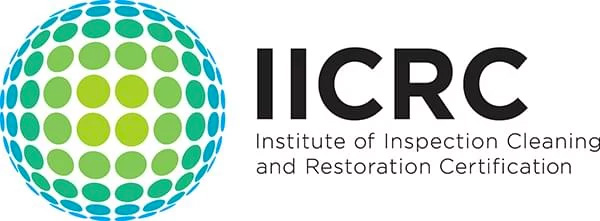How to prevent mold in your basement
The basement. Some use it as an extension of their living room or as a play area, while others prefer using it for the extra storage. There is no limit to the amount of ways you can utilize this space.
But do you know that basements (and attics) are highly susceptible to mold growth?
Getting mold in your basement can be pretty easy due to its location, humidity levels, use, and a few other external factors. If you are planning to keep this the basement and basement walls free from mold growth, the earlier you start, the easier it will be to get rid of.
Keeping your basement mold free and preventing mold from spreading can be quite a demanding task. Not only do basements have multiple ways of getting mold infiltrations, their dark and damp atmosphere provides the perfect conditions for mold to grow and thrive.
When you think of the physical damages and health implications that come with these types of fungi (and mold removal is difficult), you’ll know that prevention of mold in the basement isn’t an option, it’s a requirement. So, what can you do to prevent mold from infecting your basement?
Keep on reading to find out everything you need to know about how to prevent mold growth.
What Causes Basement Mold?
It doesn’t take much to kickstart a mold infection in your basement. That’s because of their survival requirements – food, spores, and water – are often readily available.
Now, you may be telling yourself “I’m safe. I don’t keep food or mold spores in my basement!” or “My basement is empty and I dont have a wood flooring; there is nothing for the mold to find to survive.”
If you recognize these thoughts, there are a few points you need to reconsider regarding mold prevention.
Here’s why you need to consider evaluating the presence any indoor mold.
Moisture is present in the air and there’s very little you can do to change that. But the amount of moisture in your basement is something you can change and do have control over to prevent basement mold.
Too much moisture, a high humidity, and a warm temperature – both of which basements usually offer – provide the best conditions for the growth and development of mold colonies. That’s why the first step in preventing or defeating these fungi is always cutting off their moisture supply.
When it comes to food, mold feeds on all types of organic matter; like paper, rotting/old food particles, clothes, plants, pet droppings, and wood. Since mold doesn’t grow out of thin air, where do the spores come from?
Outside, of course! Spores are very small and light, making them easy to transmit through a breeze of air or through basement pipes. When these spores make their way into a basement with “mold food” and enough moisture, growth begins.
Unfortunately, some mold species can be very toxic and unhealthy; both of which aren’t good options for you or your family. So, do you have a mold colony in your basement?
How Can You Tell If Your Basement Has Mold?
The best way to tell whether or not you have a mold problem is to contact a specialist to conduct mold testing or check if your basement meets mold-growth requirements. Check for signs of moisture, water damage, leaks, condensation, and organic materials on any cold surfaces to ensure a mold free basement.
The most common areas where you can find mold in your basement include walls, wooden frames, wall cavities, insulation, flooring, ceiling, storage boxes, furniture, dark corners, pipes, vents, and so on. If you can’t find traces of mold anywhere in your basement, then you are safe… for now!

How to Prevent Basement Mold:
When it comes to mold, it’s always better to be safe than sorry. And that’s why prevention and removal of existing mold spores is necessary. Here are a few things you can do to mold-proof and remove any mold spores floating in your basement:
1. Lower and monitor indoor humidity.
Moisture provides an ideal growing environment for mold. Therefore, reducing your basement’s humidity is a great way to preempt its formation.
The best way to change the indoor humidity is by using a dehumidifier or install air conditioners inside the basement. Especially on a concrete floor or concrete walls. This device helps to keep a room’s humidity within acceptable levels. To measure humidity levels, all you need is a hygrometer.

2. Declutter your basement.
When the basement floor is messy and full of clutter, airflow becomes limited. This, in turn, affects your basement’s ventilation, providing a conducive environment for mold formation.
That’s why you need to ensure that items such as books, firewood, insulation materials or anything fibrous is stored away neatly in your basement. Additionally, make sure to dry wet clothes that your store in the basement.
Fewer items are always preferable, and it provides more space for air to move freely. Also, try to keep items off the floor and not in direct contact with the wall.
3. Fix any plumbing leaks.
Leaks or damaged rain gutters often lead to the formation of wet spots, or stagnant pools of water that are neglected for long periods of time so its best to avoid wet floors and water vapor transmission. Since most basements are often below ground level, it becomes hard for the excess moisture to escape and the drying process to start.
Water vapor, in turn, raises the room’s moisture levels, leading to a breeding ground of fungi.
If there are any plumbing faults, below grade walls or basement leaks, make sure you fix them to restore proper water flow and minimize moisture as soon as you discover them. Wipe any water pools you find and dry the basement using a heater.
4. Refrain from growing plants in the basement.
Plants offer mold and mildew, everything that the fungi need to grow and spread. Which is why we recommend keeping them out of your basement.
If you need to have plants in your basement, make sure that there is no sign of mold growth in the plant. Remove any leaves that have fallen and treat your plant with anti-fungal pesticides. Avoid watering the plants too frequently, just enough for their growth
5. Drain any stagnant pools of water around the house close to basement windows.
Ensure that water from rain and snow is directed away from the house and doesn’t have the opportunity to pool into stagnant pockets around your home or basement slab is a great method of mold prevention. Doing so helps to keep moisture levels around and inside the basement at an acceptable level.
6. Install an exhaust fan.
Exhaust fans work great in expelling stale and humid air from your basement, creating more space for fresh air to flow in. This will greatly help with keeping mold at bay.
It’s easy to see that it only takes a few small changes to keeping your basement mold-free. Following this guide will help you to prevent mold from infecting your basement and spreading to other parts of your home, keeping it happy and healthy for years to come.


